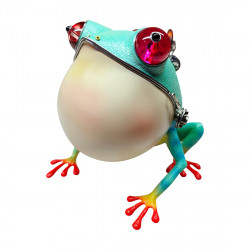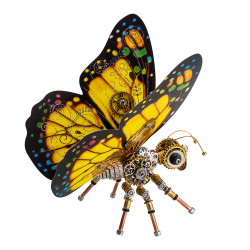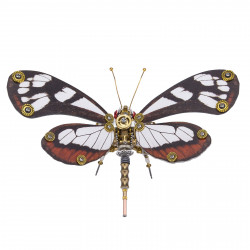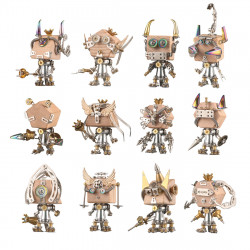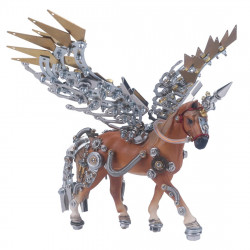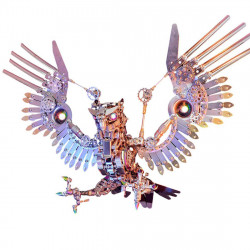Metal Werewolf Model Kit Designs

Inspiration for Werewolf Metal Model Kit Designs
How much do you know about the legend of Werewolf?
Over the last century, the werewolf century has emerged as a prominent figure in Western culture. One of the most well-liked subjects, monsters, is typically approached from the outside.
Stories and myths from all across the world's civilizations tell of humans transforming into animals. There are tiger demons in India, fox demons in China, lion people in Africa, and leopard people in Milu. Locals find these creatures scary.
European wolves are feared due to myths from northern and southeastern Europe. These myths show wolves as dangerous, wild animals that howl.
I love werewolf stories. For thousands of years, many cultures have shared these tales. Native Americans, Indo-Europeans, and Celts are just a few. Even as an adult, I continue to find it fascinating because I have been captivated by it since childhood.
Over the last century, the werewolf century has emerged as a prominent figure in Western culture. One of the most well-liked subjects, monsters, is typically approached from the outside.
Stories and myths from all across the world's civilizations tell of humans transforming into animals. There are tiger demons in India, fox demons in China, lion people in Africa, and leopard people in Milu.
Locals view all of these creatures as terrifying. European wolves are often feared due to myths from northern and southeastern Europe. These myths show wolves as dangerous, wild animals that howl.
European folklore describes a werewolf as a shape-shifter who can willingly or unintentionally transform into a wolf. Once transformed, it will howl at the moon and have an insatiable craving for raw animal or human flesh.
Werewolf traditions date back to primordial times and are found in ancient societies worldwide. A person with lycanthropy has a mental illness and thinks he is a wolf. The Greek terms lykos and anthropos, which signify wolf and man, respectively, are the source of the name.
In paganism, wolves were considered sacred animals because of their hunting prowess and cunning. Worshipping the wolf god, pagans enjoyed donning wolf teeth and fur, believing that doing so would grant them wolf power.
The word "werewolf" is a compound of the Old English words "wolf" and "wer," which imply "human." We placed humans in front and wolves behind because werewolves undergo a metamorphosis from human to wolf.
In Virtue's Gate 2, there exists a type of monster that is precisely the reverse. People know them as wolves because of how they change from wolves to humans. In Greek mythology, people refer to the werewolf as Lycanthrope, derived from Lykos, which means wolf, and Anthropos, which means man.
There are numerous paths to becoming a werewolf in Western culture. The most logical approach is getting bitten by a changed werewolf on a moon night. It is challenging to differentiate, though, as most werewolves post-transformation are identical to humans.
Stepping on dewy werewolf footprints on a moonlit night can turn someone into a werewolf. This is what some dark wizards say. They claim to have covered themselves with real werewolf fur. Somewhat turning into a werewolf, but there's a significant difference between the two, and it's also quite dangerous!
Most werewolf forms fit into two groups: regular wolves, like Timberwolves, and hybrids, which are part wolf and part human. Human wolves and werewolves both fall into the second kind of werewolves.
The entire body coat and more wolf-like body structure are the primary physical traits of werewolves. Its internal organs are different from those of wolves, and it possesses a more prominent snout and tail similar to that of a wolf. Although there are variations, the primary characteristic is that werewolves possess appendages.
The opposite is true of human wolves. Their internal organs resemble those of humans, and their bodies are not always entirely hairy. Their tails are either absent or very short. Their primary characteristic is that they have nails rather than claws.
(In actuality, werewolves are impossible to categorize precisely because of their varied traits. It could be a combination of them.)
Underworld, An American Werewolf in London, The Shining, Van Helsing, The Twilight Saga, and Iron Wolf. There are a lot of films, books, and novels about werewolves, which is why all of these films are about them. We can learn more about werewolves from books like Gail Ndolé's The Werewolf of Paris, Sabine Baring Gould's The Werewolf Tale, and American Bernard Stein's "The Encyclopedia of Werewolves: An Encyclopedia of "Wolf Maniacs," penned by Ge Ge.


